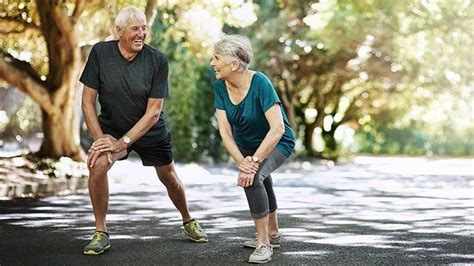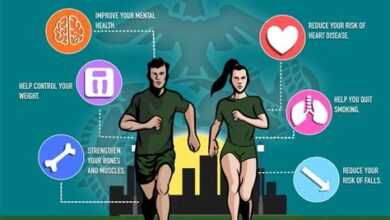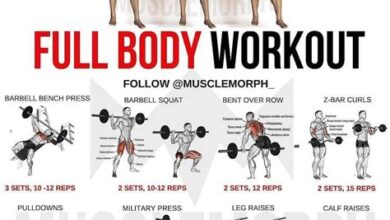Exercise and Aging: Staying Active as You Grow Older

Discover the benefits of exercise, choose the right type, create a personalized plan, overcome common barriers, and monitor progress for a successful fitness journey.As we age, it becomes increasingly important to prioritize our physical health and well-being. One of the most effective ways to do this is through regular exercise. In this blog post, we will explore the topic of exercise and aging, specifically focusing on the key aspects of staying active as we grow older.
From understanding the numerous benefits of exercise to choosing the right type of exercise and creating a personalized exercise plan, we will delve into how individuals can tailor their fitness routines to suit their unique needs. Additionally, we will address common barriers to exercise that older adults may encounter and provide strategies to overcome these obstacles. Finally, we will discuss the importance of monitoring progress and making adjustments to one’s exercise routine as needed.
By the end of this post, readers will have a better understanding of how they can stay active and maintain their overall health as they navigate the aging process. With the right approach, exercise can continue to be an enjoyable and rewarding aspect of life at any age.
Understanding the Benefits of Exercise
As we age, it becomes increasingly important to prioritize our physical health and well-being. One of the most effective ways to do this is by incorporating regular exercise into our daily routine. The benefits of exercise for older adults are numerous and varied, ranging from improved cardiovascular health to enhanced mental well-being. Engaging in regular physical activity can help to reduce the risk of chronic diseases such as heart disease, diabetes, and osteoporosis. Additionally, exercise can help to improve balance and flexibility, reducing the risk of falls and injuries in older adults.
Regular exercise can also have a positive impact on mental health, helping to alleviate symptoms of depression and anxiety. It can promote better sleep, increase overall energy levels, and improve cognitive function. Furthermore, staying physically active can help to maintain a healthy weight, which is important for overall health and well-being. The numerous benefits of exercise make it an essential component of a healthy lifestyle, especially as we age.
It’s important for older adults to understand the benefits of regular exercise and make it a priority in their daily lives. Engaging in physical activity has the potential to significantly improve overall health and well-being, allowing individuals to age gracefully and maintain independence as they grow older. With the numerous advantages that come with regular exercise, it’s clear that staying active is key to healthy aging.
Choosing the Right Type of Exercise
As we age, it becomes increasingly important to choose the right type of exercise to maintain our overall health and well-being. Whether you are a senior looking to stay active or someone who is caring for an elderly loved one, understanding the specific needs of aging bodies is crucial when it comes to exercise selection.
Low-impact exercises such as swimming, walking, and yoga are ideal for seniors as they are gentle on the joints and provide cardiovascular benefits without putting too much stress on the body. These types of exercises can help improve flexibility, balance, and muscle strength, all of which become increasingly important with age.
When choosing the right type of exercise, it’s also important to consider individual preferences and limitations. Some seniors may prefer group exercise classes for the social interaction, while others may prefer the solitude of exercising at home. Additionally, preexisting medical conditions and physical limitations should be taken into account when selecting an exercise routine.
Creating a Personalized Exercise Plan
Creating a Personalized Exercise Plan
As we age, it’s important to recognize that our exercise needs may change. The workout routine that worked for us in our 20s may no longer be suitable as we get older. This is why it’s essential to create a personalized exercise plan that takes into account our current physical condition, lifestyle, and health goals. By tailoring our exercise plan to our specific needs, we can ensure that we stay active and healthy as we grow older.
When creating a personalized exercise plan, it’s crucial to consider our individual fitness levels and any existing health conditions. This may involve consulting with a healthcare professional or a certified fitness trainer to assess our current state of health and to receive guidance on the types of exercises that are safe and beneficial for us. By taking into account our physical limitations and medical history, we can design a workout plan that reduces the risk of injury while still providing an effective workout.
Furthermore, a personalized exercise plan should also incorporate a variety of activities that cater to our interests and preferences. This could include a mix of cardiovascular exercises, strength training, flexibility exercises, and balance activities. By incorporating a diverse range of exercises, we can keep our workouts engaging and enjoyable, which can help to maintain our motivation and adherence to the exercise plan. Additionally, by including different types of exercises, we can target various aspects of our overall fitness, leading to a more balanced and effective workout routine.
Overcoming Common Barriers to Exercise
One common barrier to exercise is lack of time. Many people find it difficult to fit exercise into their busy schedules. Between work, family, and other commitments, it can be challenging to carve out time for physical activity. However, by prioritizing exercise and making it a part of your daily routine, you can overcome this barrier. Whether it’s waking up a little earlier to go for a jog or squeezing in a quick workout during your lunch break, there are ways to make time for exercise.
Another common barrier is lack of motivation. It’s easy to come up with excuses to skip a workout when you’re feeling unmotivated. However, by setting specific, achievable goals and finding an exercise routine that you enjoy, you can stay motivated to keep going. Whether it’s signing up for a fitness class with a friend or tracking your progress with a workout app, there are countless ways to stay motivated and overcome this barrier.
Finally, another common barrier to exercise is fear of injury. Many people are afraid of getting hurt while exercising, which can prevent them from starting or sticking to a workout routine. However, by starting with low-impact activities and gradually increasing intensity, you can reduce the risk of injury and build confidence in your abilities. Additionally, working with a personal trainer or physical therapist can help you learn proper form and technique, further reducing the risk of injury.
Monitoring Progress and Adjusting Exercise Routine
Monitoring Progress and Adjusting Exercise Routine
One of the key factors in maintaining a successful exercise routine is monitoring your progress. It’s important to track your workouts, including the type, duration, and intensity of each session. This can help you see how you are improving over time and where you may need to make adjustments. Using a fitness tracker or exercise journal can be helpful in keeping detailed records of your workouts.
Another important aspect of monitoring progress is paying attention to your body’s response to exercise. This includes being mindful of any improvements in strength, endurance, or flexibility, as well as any signs of fatigue or overexertion. Adjusting your exercise routine based on these observations is crucial for preventing injuries and maintaining long-term success.
As you age, it’s especially important to be aware of how your body is responding to exercise. This may mean modifying your workouts to accommodate changes in fitness levels, mobility, or any age-related health concerns. Consulting with a fitness professional or healthcare provider can help you create a personalized exercise plan that takes these factors into consideration and ensures that you are exercising safely and effectively.





